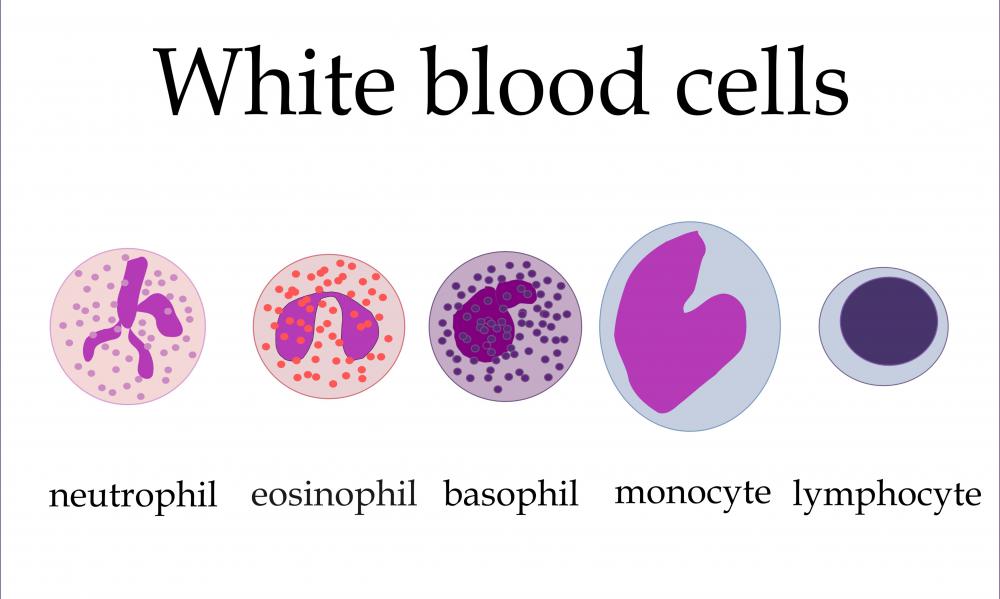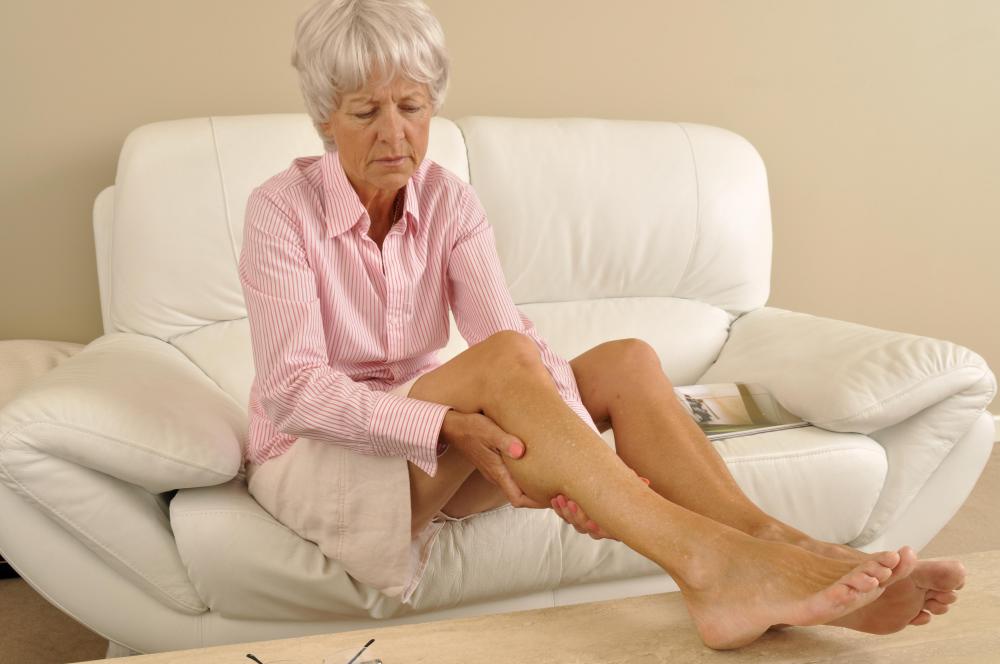At TheHealthBoard, we're committed to delivering accurate, trustworthy information. Our expert-authored content is rigorously fact-checked and sourced from credible authorities. Discover how we uphold the highest standards in providing you with reliable knowledge.
What is Lymph?
Lymph is a clear to yellowish watery fluid that is found throughout the body. It circulates through body tissues picking up fats, bacteria, and other unwanted materials, and filtering them out through the lymphatic system. It is sometimes possible to see this fluid; cuts sometimes weep it rather than blood, for example. Its circulation through the body is an important part of immune system health.
This fluid contains white blood cells, known as lymphocytes, along with a small concentration of red blood cells and proteins. It circulates freely through the body, bathing cells in needed nutrients and oxygen while it collects harmful materials for disposal. People can think of it as the milkman of the body, dropping off fresh supplies and picking up discarded bottles for processing elsewhere.

As lymph circulates, it is pulled into the lymphatic system, an extensive network of vessels and capillaries that is linked to lymph nodes, small nodules that act as filters to trap unwanted substances. The nodes also produce more white blood cells, refreshing the fluid before it is pumped back into the body. The fluid may not be as showy as blood, but it is related to an equally complex and ornate system of vessels.

Lymph also explains why things like intramuscular shots at the doctor's office work. When a medical professional injects a substance into muscle tissue, it is picked up by the fluid and then slowly filtered into the bloodstream. When people wear tight clothing or their circulation is otherwise impeded, fluids can build up in the tissue, causing edema, a condition that can be both painful and dangerous. Edema happens when lymph cannot circulate to pull these fluids out.

The lymphatic system can sometimes be used as a diagnostic tool to help doctors understand disease. Lymph nodes can be biopsied, for example, to collect evidence about bacterial agents and toxins in a patient's body. Some types of bodywork are also designed to promote the healthy circulation of lymph to encourage drainage and healthy tissues. Lymphatic massage and other types of bodywork require special training, as a massage therapist can inadvertently cause lymphedema, a collection of fluid in a limb, which can become dangerous and extremely painful.
AS FEATURED ON:
AS FEATURED ON:
















Discussion Comments
Is lymph tissue fluid, then?
excellent site! found heaps of the information i needed for a school assignment, and even found some cool facts on lymph.
The lymphatic system does not have a pump to circulate it, as the circulatory system. Lymph relies on the contraction of surrounding skeletal muscle to move it, and valves to prevent it from backing up.
How is the lymph circulated without the use of a pump or contraction?
where is the auricle located and what is it?
How does it work, though?
Wow. That really made me understand the whole lymph system and how everything works. Thanks!
informative and helpful.
Very good info for medicos like me. Thank you.
Amazing article. It helped with my homework!
Fine article.
found it very helpful.
Very informative. Thank you.
for a lot of days i was confused about what lymph was but after reading this have well understood. Thank you.
Great article very informative and accurate! Thank you! You helped me with my homework!
Post your comments